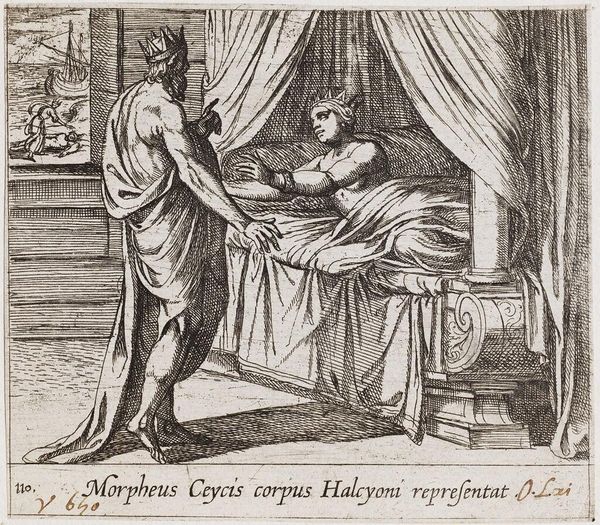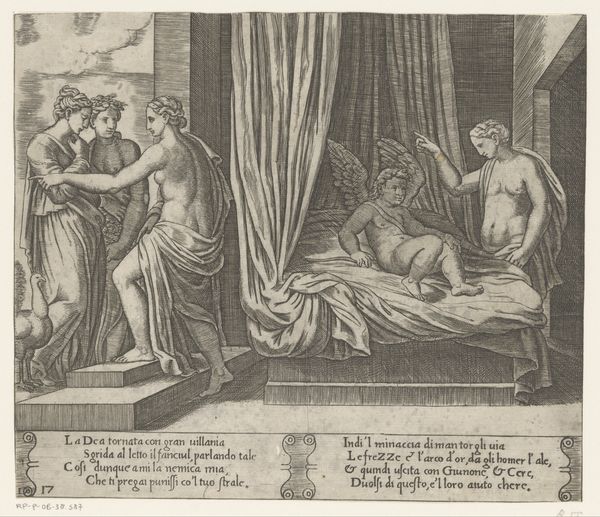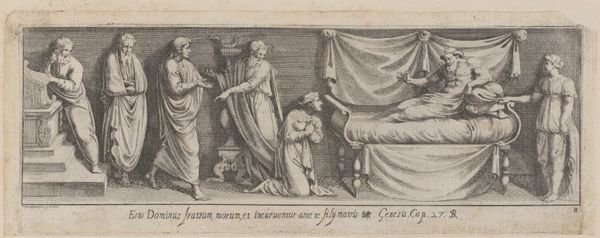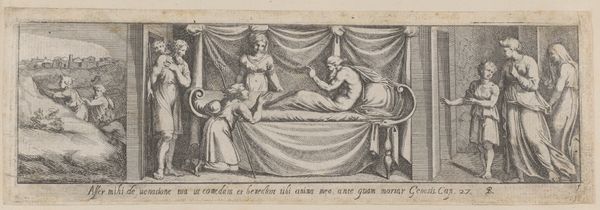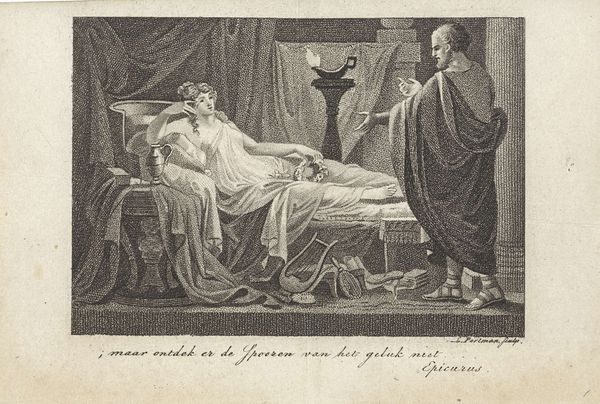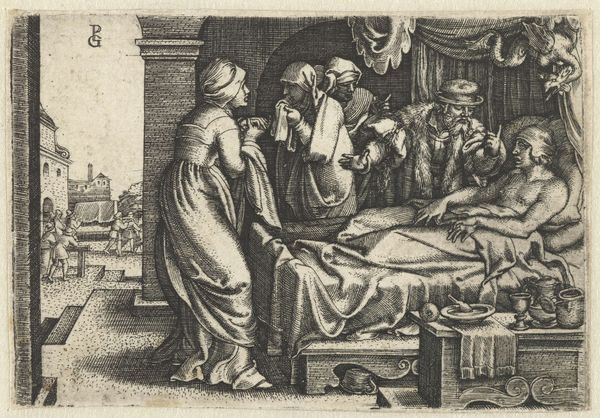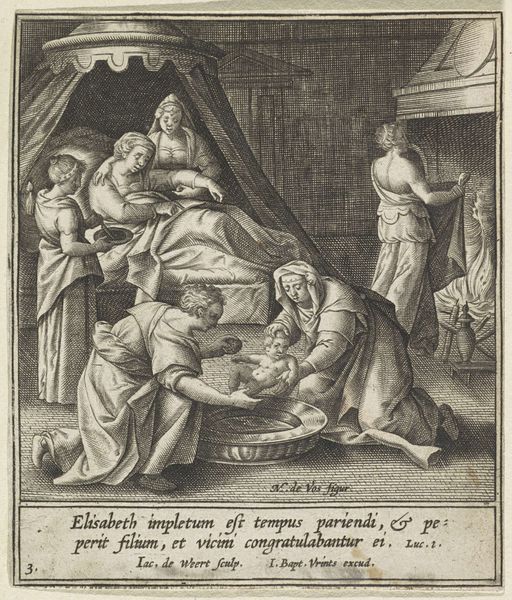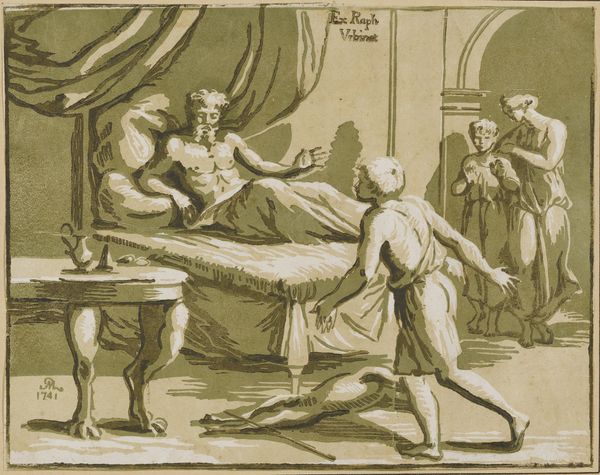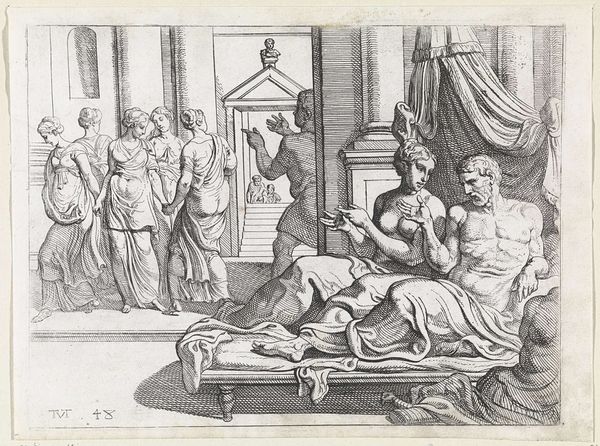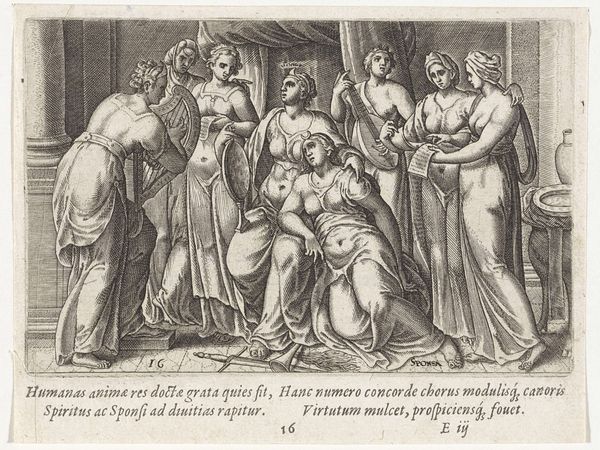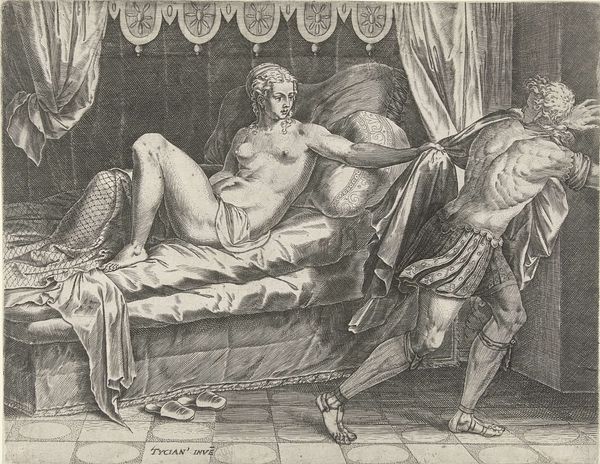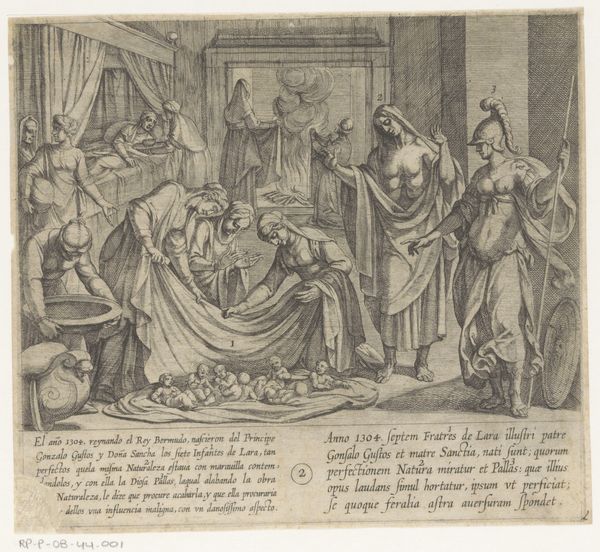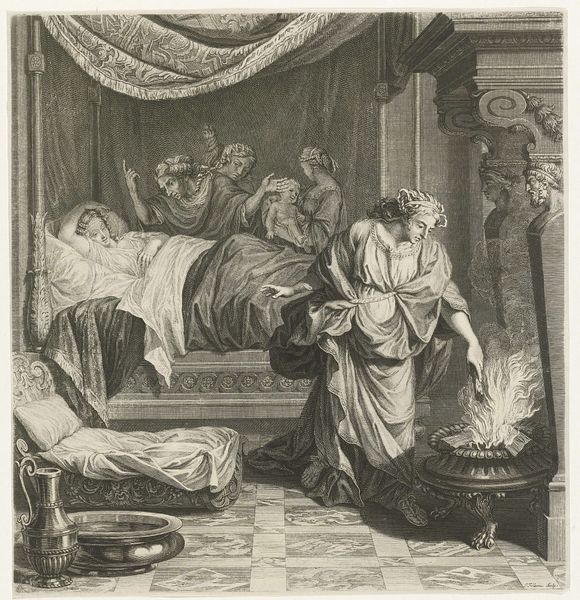
Plate 110: Morpheus, as Ceyx, Appearing to Alcyone (Morpheus Ceycis corpus Halcyoni representat), from Ovid's 'Metamorphoses' 1606
0:00
0:00
drawing, print, engraving
#
drawing
#
narrative-art
#
baroque
# print
#
figuration
#
men
#
line
#
pen work
#
history-painting
#
engraving
Dimensions: Sheet: 4 in. × 4 5/8 in. (10.2 × 11.7 cm)
Copyright: Public Domain
Antonio Tempesta created this small print, “Morpheus, as Ceyx, Appearing to Alcyone,” in the late 16th or early 17th century, using the intaglio process of etching. Here, a metal plate is covered with a waxy ground, and the artist draws through this ground with a sharp needle, exposing the metal. The plate is then immersed in acid, which bites into the exposed lines. The resulting incised image holds ink, which is then transferred to paper under high pressure. This print is characterized by a network of fine lines, meticulously laid down to create shading and texture. Look closely, and you can see how Tempesta varied the density and direction of these lines to describe the forms and surfaces in the scene. Etching allowed for relatively quick reproduction, making classical subjects like this accessible to a wider audience. While not as materially rich as a painting or sculpture, prints like this one played a crucial role in disseminating visual culture and ideas during the Renaissance. They remind us that even seemingly modest materials can carry significant cultural weight.
Comments
No comments
Be the first to comment and join the conversation on the ultimate creative platform.
